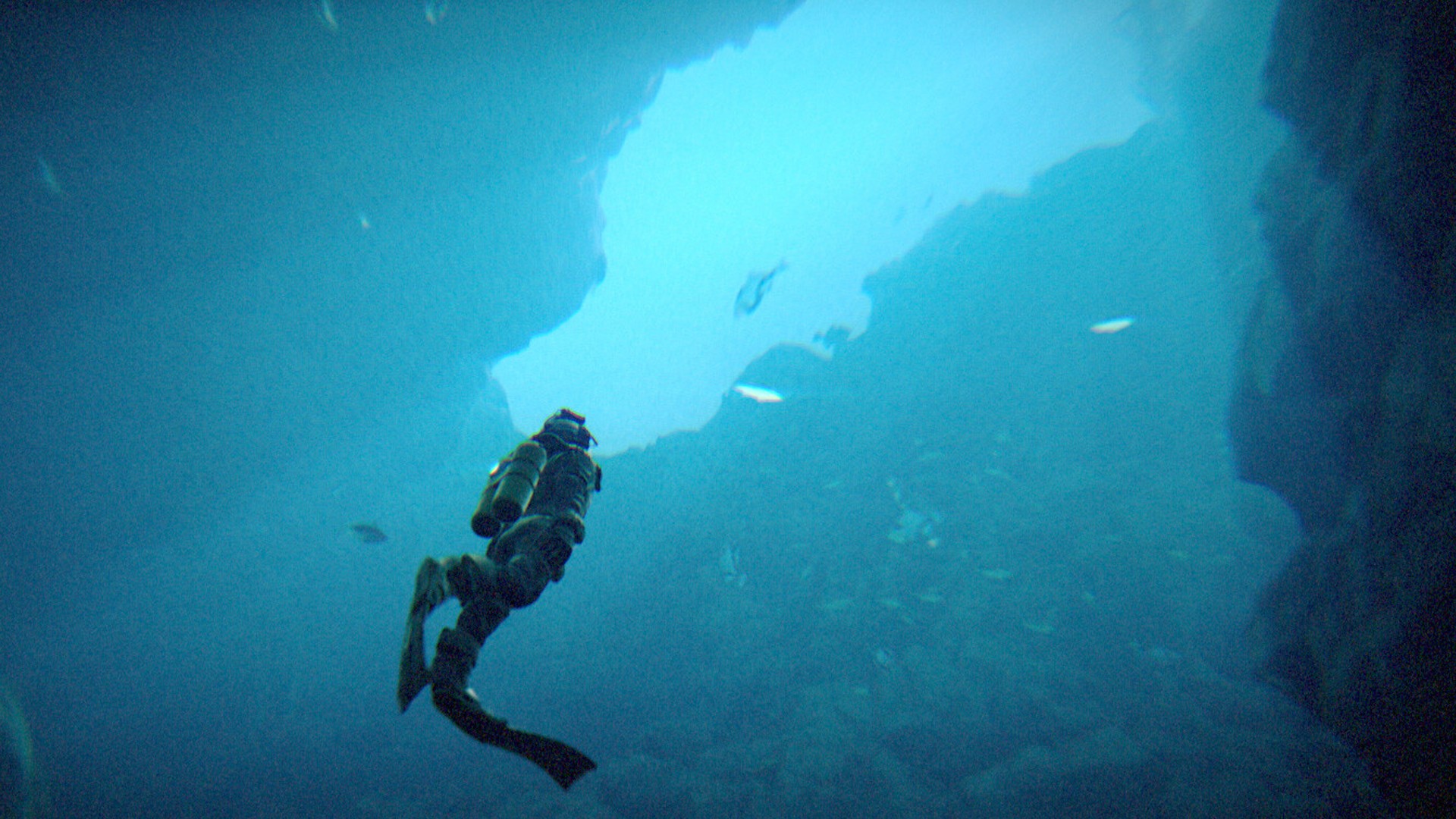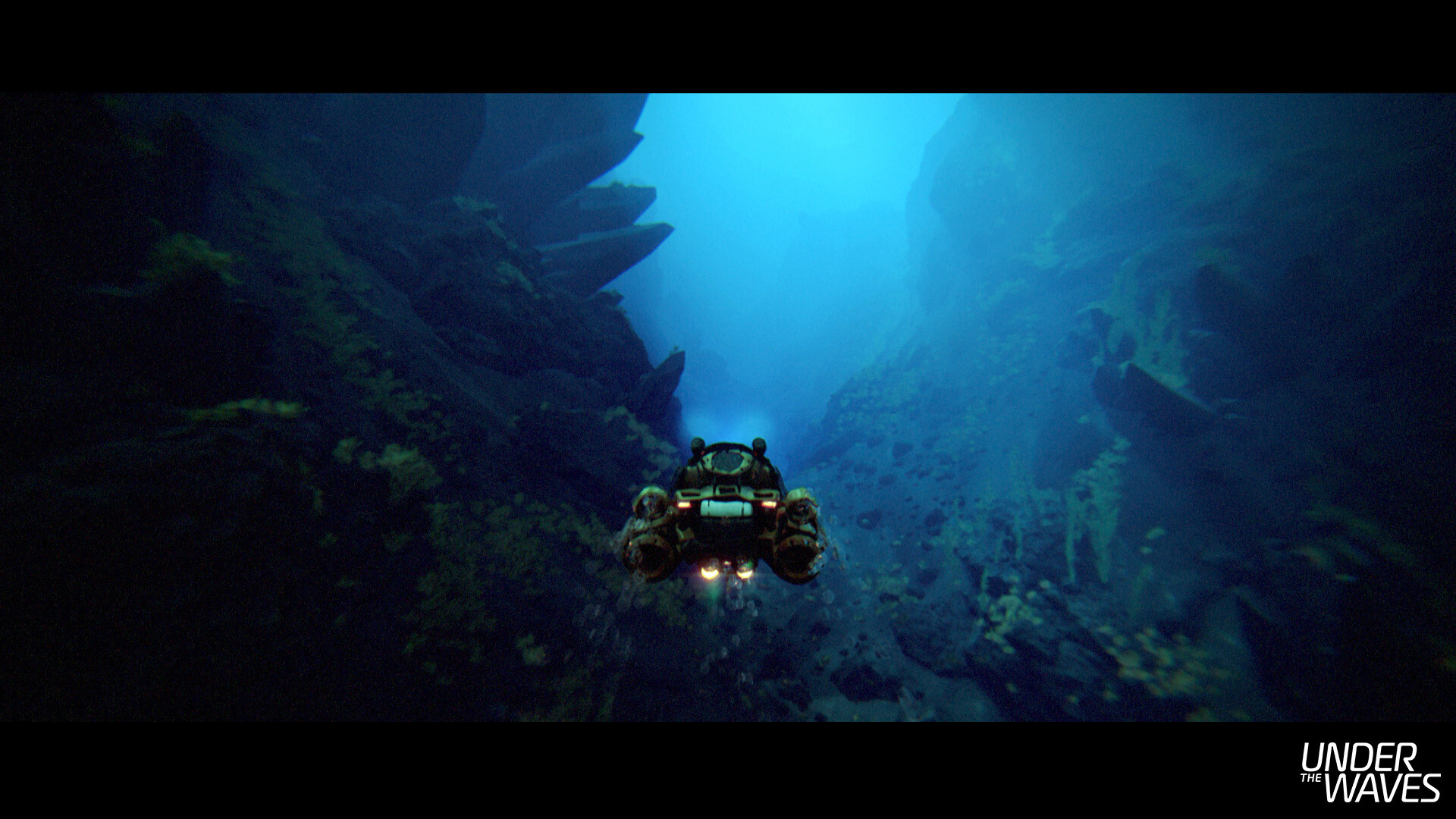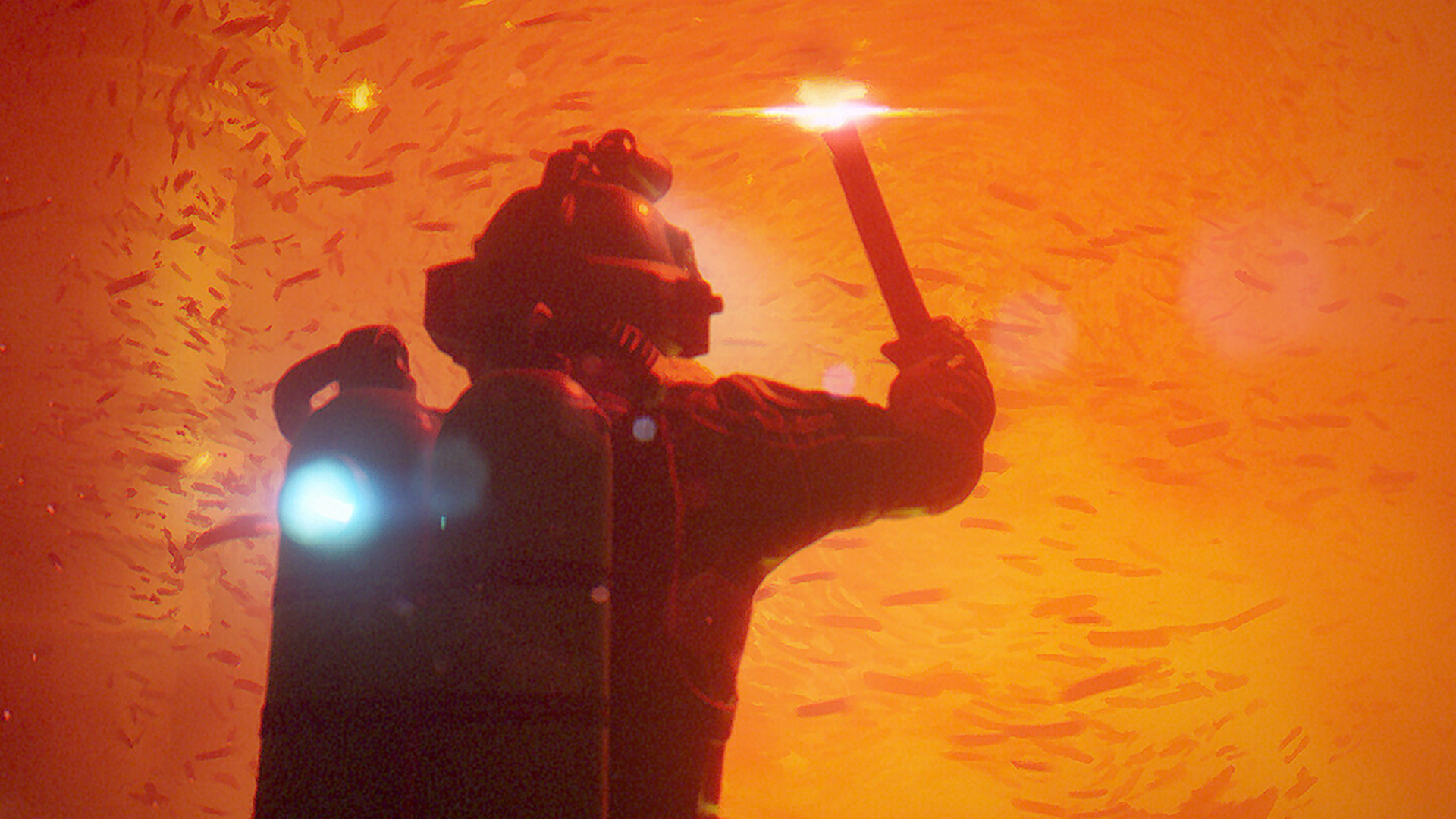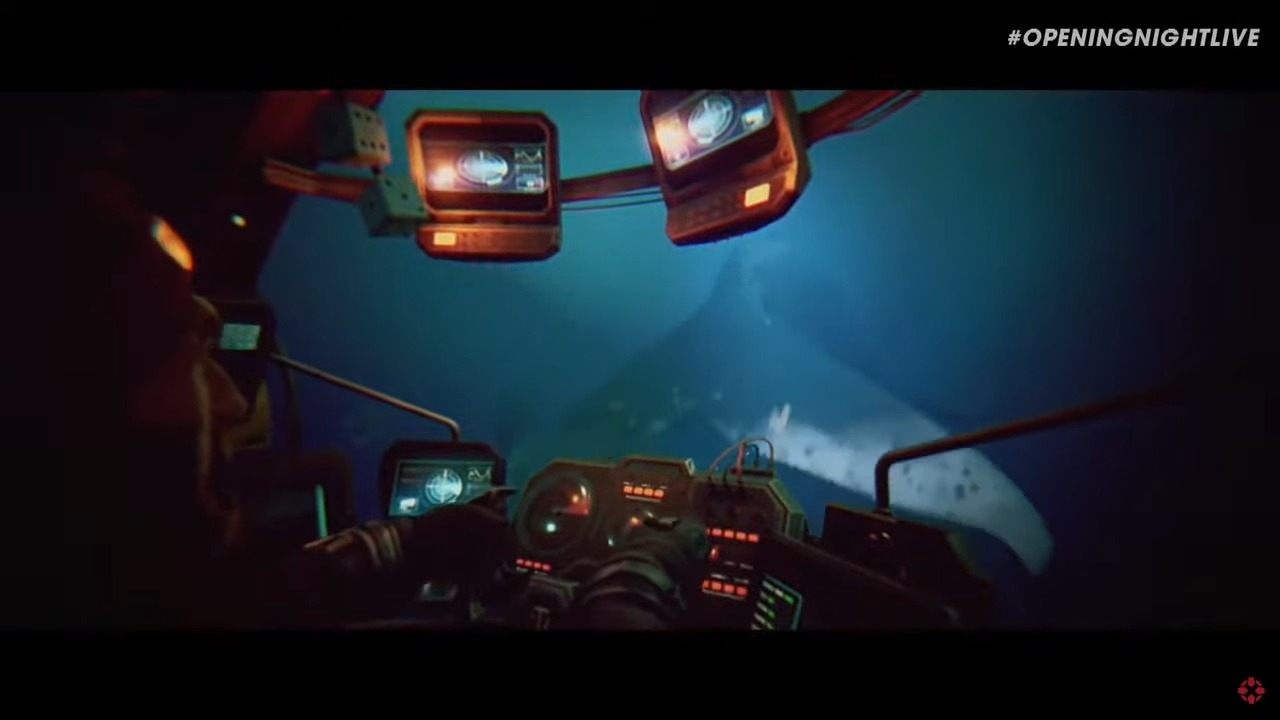How Under the Waves is bringing a touching personal story to life with an environmental message
Interview | Under the Waves devs chat to us about their narrative adventure inspired by oil pollution

When you're going through difficult times, or trying to deal with painful emotions, it can be hard to feel present. Sometimes you need to get away, to give yourself space to breathe. It's why, in part, the concept for Under the Waves immediately piqued my interest. The new narrative adventure from Parallel Studio takes place in the depths of the North Sea in an alternate techno-futuristic take on the 1970s. As well as providing an environment ripe for discovery and exploration, the setting serves as a poetic metaphor for protagonist Stan's state of mind. As a professional diver who retreats underwater, the solitude of the deep sea offers a contemplative backdrop for Stan to come to terms with his grief.
As we navigate his experiences in the depths, we'll encounter strange events under the sea, have the freedom to explore during story missions, and make discoveries at our leisure. While Stan's journey is at the heart of the experience, there's also an undercurrent of environmentalism in Under the Waves, with mechanics and subtle messages that explore our connection to nature. In fact, the very idea for Under the Waves was originally born after CEO and game director Ronan Coiffec witnessed an oil spill in Brittany.
"The idea of the game started something like, maybe 20 years ago, or a little less," Coiffec says. "When I was a little child, I lived in Brittany in the west part of France. My father was a sailor, so I lived there near the sea. One day there was an accident with an oil ship, an oil container ship was crushed on the coast, and I saw a lot of oil on the beach. So at this moment, I started to think about [the] human impact."
"When I started art school, I started to make my first prototype of a video game. So I just used what I had seen for the original concept of the game. I started to make some prototype about collecting oil on the ocean's floor. This was, for me, the very beginning of my career in video games, because it was a concept that helped me understand a lot of things about game design, about technically how to make a game."
Feeling down
Coiffec soon moved onto other projects in the games industry, including a stint with Dontnod working on the likes of Remember Me and Life is Strange, but the original prototype never left his mind. Three years ago, Coiffec decided to revisit the idea with the Parallel team. Using the initial concept, they began trying out new things in 3D using Unreal Engine, and realized it could be a "really cool" project to work on.
Along with Coiffec's own experiences growing up by the sea in Brittany, Under the Waves also draws from the documentaries and books of Jacques Cousteau for its retro-futuristic setting inspired by the 1970s. Coiffec says the documentaries, in particular, had a "kind of grain" picture quality that helped influence the visual style. After a lot of iteration, the original concept began to grow and take shape into a bigger, more ambitious project that focuses on the narrative surrounding Stan as well as exploration.
"The world is quite large," says lead game designer Thomas Bardet. "So this is mainly a narrative game, you have a linear story that you'll be able to discover. But at any point you can also explore the ocean and the ocean really gives you interest [points] to explore. There's always something to find. You can find an old ship, you can find some strange creature that [you can] follow."
Weekly digests, tales from the communities you love, and more
"So there is stuff to find, but it's also mostly about this strong mood in the ocean," Bardet continues. "There's an atmosphere of quietness, of being alone. And this is a contrast with the narrative story, where it's more about internal dialogue and everything. The ocean and this narrative story, this personal story about Stan, they really feed each other."

From swimming through caves to exploring wrecks and piloting a submarine across the depths, there's plenty to see and discover, including salvageable pieces dotted around that will offer more insight into the backstory of the world. You'll also have the freedom to decide how you want to reach the next point in the narrative; everything has been designed to allow you to move "at your convenience" and "have the choice to explore", as Coiffec puts it.
At the heart of Under the Waves, though, is a very human story. While we'll have to dive into the adventure for ourselves to discover Stan's journey underwater, it's clear that the narrative will follow him as he tries to put his traumatic past behind him. As Coiffec explains, the decision to explore the effects of a life-changing loss and the grief that follows comes from a personal place for Coiffec.
"I lost my brother a few years ago," Coiffec says. "So for me, it's a project about talking about grief and about the cycle of life. And actually, the other co-founder of the studio had a child at the same moment, so we decided to create a personal story in the game."
Human impact

"With the help of Surfrider, the team was also able to gain a better understanding of pollution and its effects on the environment Stan is submerged in."
As we progress through Stan's personal story, the team at Parallel is striving to immerse players in the deep sea and get us thinking about our connection to nature. Since an oil spill helped to inspire Under the Waves, subtle messaging around the environment and our impact on it has been woven into certain mechanics. The team also collaborated with the Surfrider Foundation to incorporate facts from the real-world.
"So the idea was mainly to add some simple messages on some gameplay mechanics and then add some facts from the real world," says Coiffec. "The idea really is to let the player play the story, play the game, and smoothly we add some events, some minor things, but with a lot of impact. For example, in the game you can swim, and you lose some oxygen, but you have a little capsule of oxygen you can use to refill. When Stan uses one of them, he just drops it in the ocean. You can take it, you can grab it if you want, but you can also leave it in the ocean. If you do take it, you collect some plastic resources you are able to craft new things with. So just by those kinds of little gameplay mechanics, we tell the player to grab plastic in the ocean."
The Parallel team also adopted a whale to help fund scientist research around the marine mammal. As you play through Under the Waves, you can find out about this adoption and discover facts about it as you explore. With the help of Surfrider, the team was also able to gain a better understanding of pollution and its effects on the environment Stan is submerged in.
"Surfrider helped us a lot to strengthen our vision of what pollution in the ocean meant," Bardet says. "For example, a huge source of pollution in the North Sea are from containers, a lot of containers that fell from a ship. And so with this information we can integrate this into the story smoothly. There's a lot of things like that came from the Surfrider collaboration, and for us, it's mostly our chance to give some light to them [Surfrider] to make them shine."

As Coiffec adds, the story and setting of Underwaves strives to "create a real empathy for the ocean itself" and allow you to connect to the natural world surrounding Stan. By drawing from facts, using crafting mechanics, and giving us the space to explore, the team hopes Stan's experiences will encourage players to be more aware of the effects of pollution and the human impact on the ocean.
"The idea is really to connect those kinds of facts with the main story to create a strong justification and a strong meaning about what it is to not pollute the world, what the human impact is, and the cycle of life; because the plastic is made from oil, oil is made from ancient life. So we try to connect everything just to let the player think about that and we hope it gives them some idea about the ocean."
Check out some of the best video game stories of all time

I started out writing for the games section of a student-run website as an undergrad, and continued to write about games in my free time during retail and temp jobs for a number of years. Eventually, I earned an MA in magazine journalism at Cardiff University, and soon after got my first official role in the industry as a content editor for Stuff magazine. After writing about all things tech and games-related, I then did a brief stint as a freelancer before I landed my role as a staff writer here at GamesRadar+. Now I get to write features, previews, and reviews, and when I'm not doing that, you can usually find me lost in any one of the Dragon Age or Mass Effect games, tucking into another delightful indie, or drinking far too much tea for my own good.


